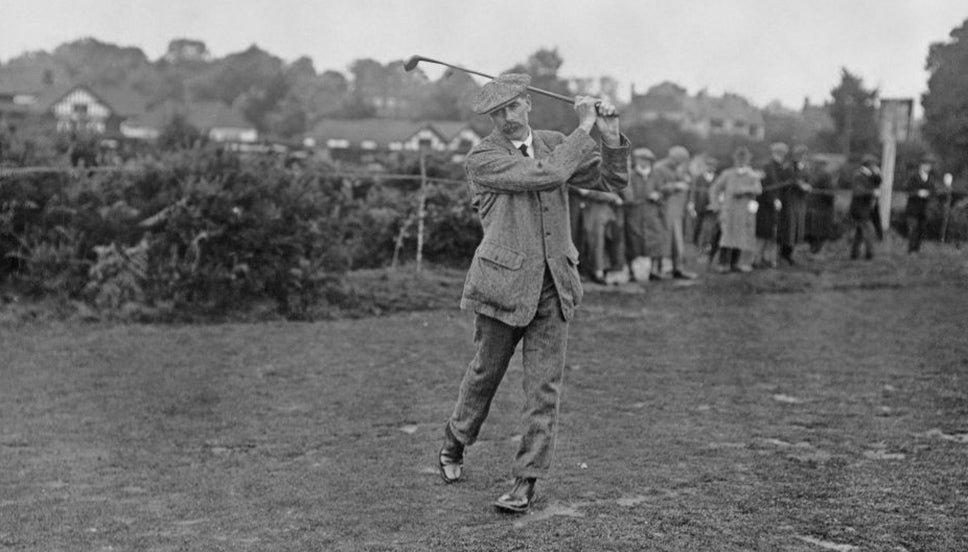Braid capped a decade of exceptional performance in 1910 with a fifth Claret Jug in 10 years, while in that time he also recorded three runner-up finishes and two other top-fives.
The Scot remains one of the most consistently successful golfers The Open has ever seen. On his debut in 1894, he finished in a tie for 10th and it was not until 1913 that he finished lower - a run of 18 successive Opens.
He won four of his titles in just six years and in 1910 joined Bob Martin and J.H. Taylor as a double winner at St Andrews, having also won in 1905. He remains the only player in Open history to have won twice at both the Home of Golf and Muirfield.
The number five was a theme all week in 1910. The 50th Open was scheduled to start on a Tuesday, but severe weather intervened and when Braid reached the 13th hole, he was told the round was being cancelled.
The course was flooded but Braid played on, just in case the news had been wrong. Despite the awful conditions, he still signed for a 76 - by far the best score of the day.
The Championship was restarted the following morning and Braid matched Tuesday's 76, before bettering that score by three in round two.
George Duncan shot a 71 in round three to take a two-stroke lead, but Braid held his nerve in the final round, his 76 seven shots better than Duncan's and enough to bring him a fifth title.
He ultimately triumphed by a comfortable margin of four shots, with Sandy Herd pipping Duncan to second.
Braid's great rivals J.H. Taylor and Harry Vardon were both three-time Champion Golfers by the time the Scot won his first. Yet 10 years on, Braid was the man to beat.
St Andrews 1910 was to be Braid's last triumph, however. Three more top-10 finishes followed before the first World War and when the Championship resumed, he did not threaten.
In his later years, he retired from professional golf and concentrated on his passion for course design while remaining head professional at Walton Heath, where he served for 45 years.
It is estimated his influence as an architect was felt by more than 200 golf courses around Great Britain, Braid leaving his mark on lasting treasures such as the Championship Course at Carnoustie before his death in 1950.
